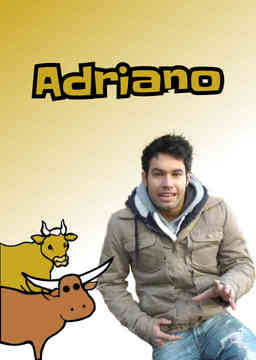









Difficulty:
 Intermediate
Intermediate
Italy
Mussolini continues to get rid of any traces of foreign words, and even mounts an exhibit against the use of the common formal second person singular address "Lei" (you) in favor of "Voi." See this lesson about "Voi" to get some background.
Difficulty:
 Intermediate
Intermediate
Italy
A great deal of effort went into purging foreign words from the Italian language under the fascist regime. Newspapers, magazines, and book publishers were at the forefront of the effort and were tasked with finding Italian replacements for foreign words and expressions. Many fascist-era terms have fallen by the wayside, but some succeeded and are still in use today. As an example, the word manifesto [poster] was successfully introduced to replace the French term affiche.
Difficulty:
 Intermediate
Intermediate
Italy
The segment looks at how Mussolini patterned his fiercely nationalist rhetoric after poet Gabriele D'Annunzio, while harkening back to the glory of Imperial Rome. The song in the segment refers to Balilla, an 18th century Genoese boy. In 1746, Balilla threw a stone at an Austrian official of the occupying Hapsburg Empire, which led to the War of the Austrian Succession.
Difficulty:
 Intermediate
Intermediate
Italy
Mussolini forbade the use of dialects and the minority languages that were spoken in the regions bordering the countries to the north in favor of one language for all. Italians were bombarded by fascist propaganda and Mussolini's very frequent speeches.
Difficulty:
 Intermediate
Intermediate
Italy
Me Ne Frego [I don't give a damn], was one of the mottoes of Fascism, coming originally from the writings of Gabriele d'Annunzio and employed by storm troops during World War One as a war cry for courage and daring, with the meaning, "I don't mind dying for freedom." The motto gives the title to this documentary about the influences of Italian Fascism on the Italian language. It was produced by the Istituto Luce Cinecittà, with materials from the historical Luce archives, and narrates the obscure attempt by the Fascist regime to create a new and unique language, a new “Italian” that fit the dogma of the dictatorship.
Difficulty:
 Intermediate
Intermediate
Italy
"Sunshine for Palestine" has set in motion an innovative project for teaching the latest scientific theories to young people, and it has been enormously successful.
Difficulty:
 Intermediate
Intermediate
Italy
Besides working as a journalist, Francesca is involved in some international projects for sustainability. Here, she tells about a hospital in Gaza.
Difficulty:
 Intermediate
Intermediate
Italy
The tour of the Abruzzo Region concludes with sights near l'Aquila, the region's capital.
Difficulty:
 Intermediate
Intermediate
Italy
The segment features the Oratory of San Pellegrino and the Church of St. Mary of the Assumption in Bominaco. These, together with the Marian church in nearby Fossa, are considered the finest examples of Medieval art and architecture in the Abruzzo Region.
Difficulty:
 Intermediate
Intermediate
Italy
Abruzzo churches built by order of Saint Francis of Assisi (1226–1330) or dedicated to him, are featured in this segment.
Difficulty:
 Intermediate
Intermediate
Italy
The segment highlights two medieval churches near the ancient site of Alba Fucens. Both churches display ornamental facings made from pieces of colored marble that are intricately pieced together, what is known as Cosmatesque work.
Difficulty:
 Intermediate
Intermediate
Italy
Highlights include a church straddling the Romanesque and Gothic in Celano, and Massa d'Albe (the Roman city of Alba Fucens), where there is an amphitheater excavated from rock. The word arena comes from the Latin word harena, or sand. Sand was used on arena floors to catch the blood lost during gladiator games and the like.
Difficulty:
 Intermediate
Intermediate
Italy
The tour draws to a close in Rome's rougher neighborhoods, those that were particularly fascinating to poet and filmmaker Pier Paolo Pasolini.
Difficulty:
 Intermediate
Intermediate
Italy
The Abruzzo Region, sometimes known as the Abruzzi with an i in older publications, is the area of interest for this six-segment video. This segment concentrates on the Piccolomini Castle in Marsica.
Difficulty:
 Intermediate
Intermediate
Italy
Rome's many bridges are the focus of this video, including the Ponte Rotto, which dates back to ancient Rome. Only part of the Ponte Rotto is still standing and this is why it is called rotto or broken. Rivers are masculine in Italian, and ancient Roman statues portray River Gods as recumbent elderly men with long beards.
Are you sure you want to delete this comment? You will not be able to recover it.